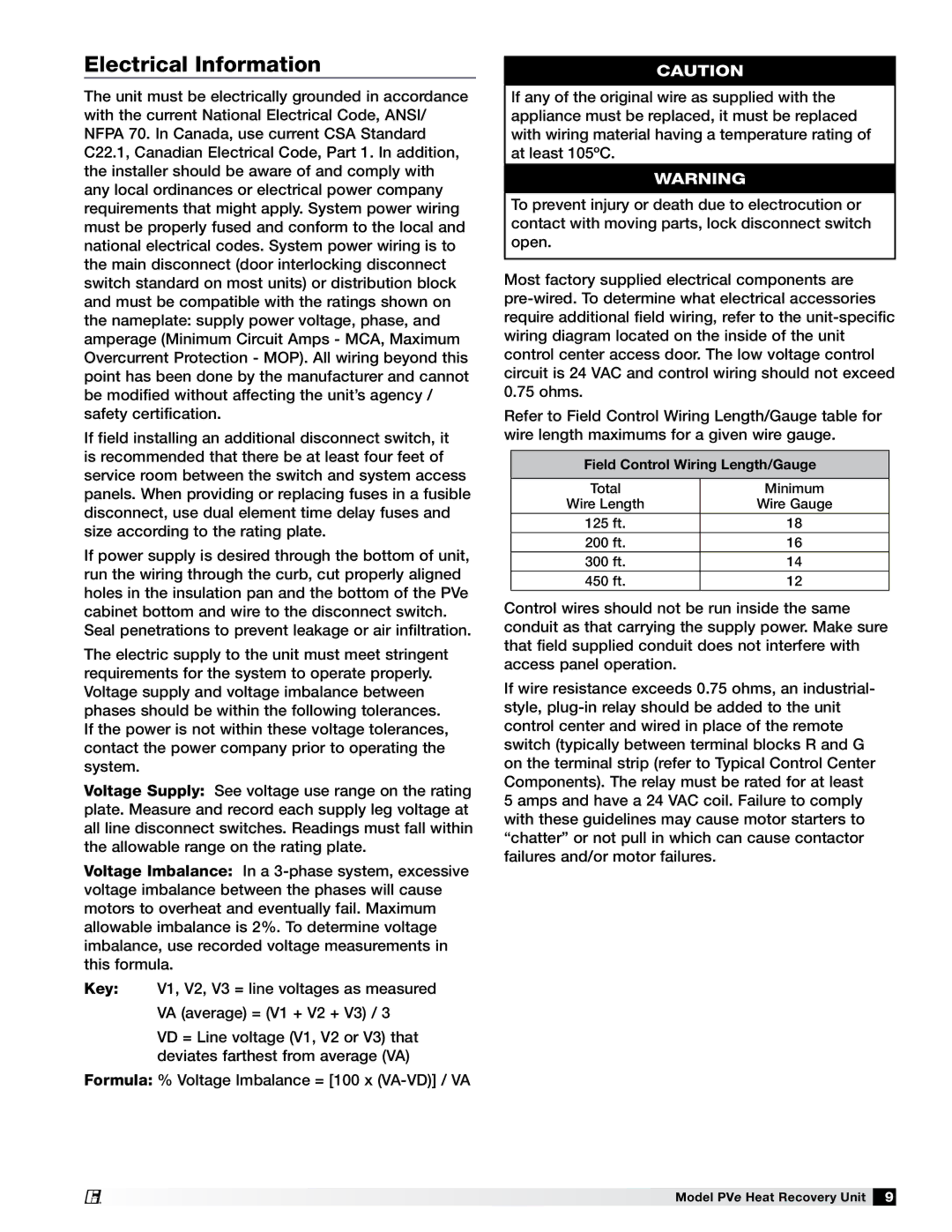
Electrical Information
The unit must be electrically grounded in accordance with the current National Electrical Code, ANSI/ NFPA 70. In Canada, use current CSA Standard C22.1, Canadian Electrical Code, Part 1. In addition, the installer should be aware of and comply with any local ordinances or electrical power company requirements that might apply. System power wiring must be properly fused and conform to the local and national electrical codes. System power wiring is to the main disconnect (door interlocking disconnect switch standard on most units) or distribution block and must be compatible with the ratings shown on the nameplate: supply power voltage, phase, and amperage (Minimum Circuit Amps - MCA, Maximum Overcurrent Protection - MOP). All wiring beyond this point has been done by the manufacturer and cannot be modified without affecting the unit’s agency / safety certification.
If field installing an additional disconnect switch, it is recommended that there be at least four feet of service room between the switch and system access panels. When providing or replacing fuses in a fusible disconnect, use dual element time delay fuses and size according to the rating plate.
If power supply is desired through the bottom of unit, run the wiring through the curb, cut properly aligned holes in the insulation pan and the bottom of the PVe cabinet bottom and wire to the disconnect switch.
Seal penetrations to prevent leakage or air infiltration.
The electric supply to the unit must meet stringent requirements for the system to operate properly. Voltage supply and voltage imbalance between phases should be within the following tolerances. If the power is not within these voltage tolerances, contact the power company prior to operating the system.
Voltage Supply: See voltage use range on the rating plate. Measure and record each supply leg voltage at all line disconnect switches. Readings must fall within the allowable range on the rating plate.
Voltage Imbalance: In a
Key: V1, V2, V3 = line voltages as measured VA (average) = (V1 + V2 + V3) / 3
VD = Line voltage (V1, V2 or V3) that deviates farthest from average (VA)
Formula: % Voltage Imbalance = [100 x
CAUTION
If any of the original wire as supplied with the appliance must be replaced, it must be replaced with wiring material having a temperature rating of at least 105ºC.
WARNING
To prevent injury or death due to electrocution or contact with moving parts, lock disconnect switch open.
Most factory supplied electrical components are
Refer to Field Control Wiring Length/Gauge table for wire length maximums for a given wire gauge.
Field Control Wiring Length/Gauge
Total | Minimum |
Wire Length | Wire Gauge |
125 ft. | 18 |
200 ft. | 16 |
300 ft. | 14 |
450 ft. | 12 |
Control wires should not be run inside the same conduit as that carrying the supply power. Make sure that field supplied conduit does not interfere with access panel operation.
If wire resistance exceeds 0.75 ohms, an industrial- style,
Model PVe Heat Recovery Unit 9
